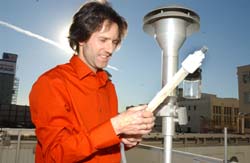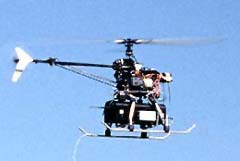This special field revolves around processes for modifying material properties (milling, cooling), composition (filtration, distillation) and type (oxidation, hydration).
Valuable information is available on a broad range of technologies including material separation, laser processes, measuring techniques and robot engineering in addition to testing methods and coating and materials analysis processes.

Purdue University researchers have developed a new method to quickly and inexpensively create microfluidic chips, analytic devices with potential applications in food safety, biosecurity, clinical diagnostics, pharmaceuticals and other industries.
“This development democratizes the preparation of microfluidic biochips,” said Michael Ladisch, Distinguished Professor of Agricultural and Biological Engineering and Biomedical Engineering. “This brings the design and manufacture of these devices

Space exploration and underground mining both take place in extreme environments – so perhaps it is not too surprising that technology developed for one field is now being applied to the other.
ESA’s Technology Transfer Programme is accelerating space technology spin-offs to the mining and the minerals industry sector. In a recent workshop with representatives from the sector, several potential areas were identified as being suitable for cooperation.
“Today 7% of our completed tech

Facelifts can sag. Botox is temporary. But modern science has a new way to return youth to weathered faces: the rock abrasion tool (RAT). If your dermatologist hasn’t heard of it, ask your local Mars scientist.
Billions of years of exposure to the sun, atmosphere and extremely fine Martian dust has given Mars rocks a weathered “rind,” or exterior layer. The RAT, part of the science-instrument package carried by the two Mars rovers, Spirit and Opportunity, uses a diamond-tipped robotic

Hundreds of billions of plastic food and beverage containers are manufactured each year in the U.S. All of these packages must undergo sterilization, which at present is done using high temperatures or chemicals. Both of these methods have drawbacks. Chemicals often leave a residue that can affect the safety and taste of the product, and produce undesirable waste. Heat is effective and sufficiently rapid, but necessitates the use of costly heat-resistant plastics that can withstand sterilization temp

New technologies developed by University of Southern California engineers to measure the toxic properties of ultrafine particles in air pollution are helping scientists understand the connection between smog and cardio-respiratory disease.
“We are just beginning to realize that these microscopic specks of dust and soot are far more toxic in the human body than larger, coarser particles,” said Constantinos Sioutas, deputy director and co-principal investigator of USC’s Southern Californi

Australian scientists have developed a ’brain’, which enables the production of a world-first low-cost, intelligent small helicopter, set to end many difficult and dangerous tasks undertaken by humans.
The CSIRO Mantis can simply be told where to go and what to do, and it will go off, do the job and find its own way home, unassisted.
The low-cost CSIRO Mantis, described as a vertical take-off, unmanned aerial vehicle (UAV), provides a host of new ways of doing things.